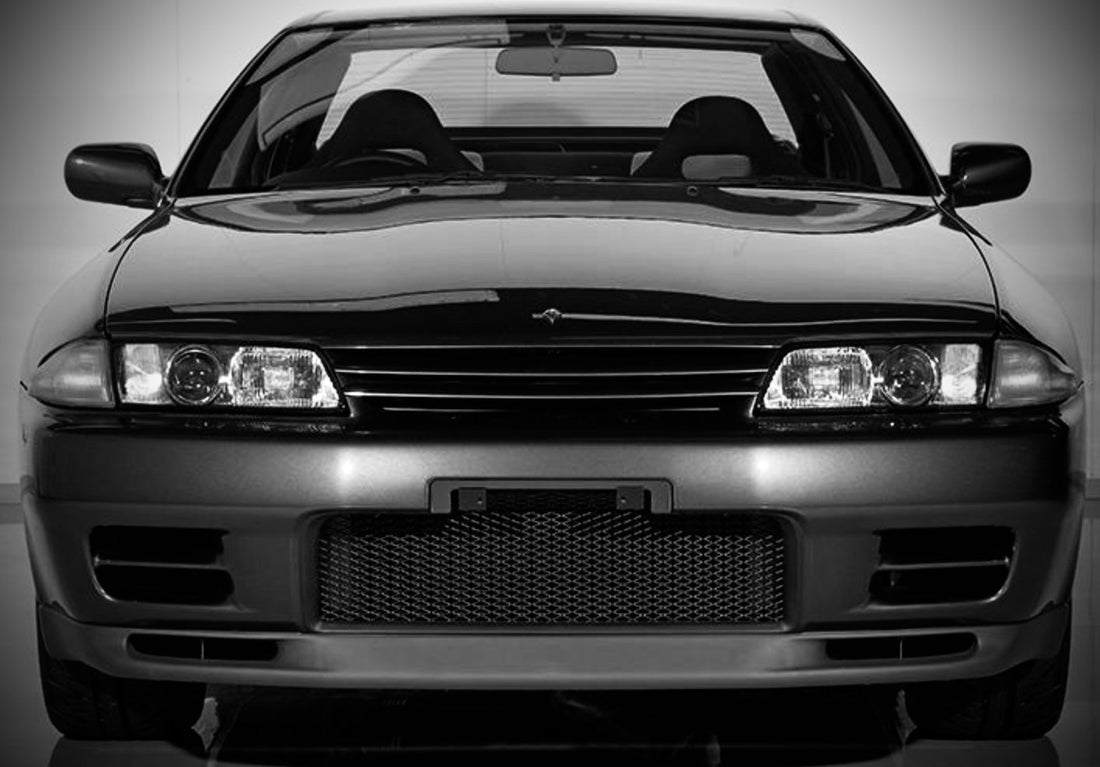
How to Build a 1000HP Nissan Skyline R32 GTR | RB26DETT Tuning Guide

How to Build a 1000HP Nissan Skyline R32 GTR
The Nissan Skyline R32 GTR is an icon among JDM legends, known for its advanced all-wheel-drive system (ATTESA), sophisticated multi-link suspension, and, most notably, its RB26DETT inline-six engine. With the right parts and attention to detail, this platform can be transformed into a reliable 1000 horsepower street or track car. This guide outlines the major components and systems you’ll need to upgrade to hit that magic four-digit number safely and sustainably.
Engine Internals: Building a Bulletproof RB26
While the RB26DETT is a highly capable engine, 1000hp is well beyond the limits of the stock internals. A full engine build is non-negotiable at this level. The OEM crankshaft is known to hold high power when properly balanced, but most builders opt for a Billet or Forged crank from Tomei, Callies, or Nitto for additional insurance and RPM stability.
Forged pistons from CP, JE, or Wiseco are a must, matched with H-beam or I-beam connecting rods from Carrillo, Manley, or Nitto. Compression ratios typically stay between 8.5:1 and 9.0:1 for turbo applications, with coatings for additional heat resistance and friction reduction.
Headwork is just as important: ported and polished heads with oversized valves, upgraded valve springs, and solid lifters or shim-less buckets ensure stability at high RPM. Pair this with high-lift cams (272–280 duration) from HKS, Tomei or Kelford to increase top-end power.
ARP L19 or CA625+ head studs, MLS head gasket, ACL race bearings, and a GTR-specific oiling solution like a crank collar mod and upgraded oil pump (e.g. Nitto, N1 or Plazmaman) are critical. You’ll also want a baffled sump or extended oil pan to handle oil starvation during hard cornering. For track-focused builds, a dry sump system is the ultimate solution but comes at a significant cost.
Turbocharger: Single Turbo Conversion and Manifold Fabrication
At 1000hp, the stock twin-turbo layout is long gone. You'll need a large-frame single turbo setup, typically something in the 76–88mm range. Popular choices include the Garrett G42-1200, Precision 6885, or BorgWarner S300/S400 series. These support the required flow rates and can be paired with a twin-scroll manifold to improve spool.
Custom turbo manifolds, dump pipes, and 3.5-4 inch downpipes are often required. Titanium or stainless-steel piping with V-band flanges and turbosmart clamps offer strength and easier serviceability. Wastegate control should come from a dual 44mm–50mm external wastegate setup from Turbosmart or Tial.
An air-to-air intercooler with at least a 4” thick core and custom 3.5” intercooler piping is needed to keep IATs in check under sustained boost.
ECU and Tuning: Controlling a Monster
For a 1000hp GTR, a standalone ECU is essential. Options like Link G4X Fury, Haltech Elite 2500, or Motec M150 offer full control over fuel, spark, boost, DBW throttle, traction, and safety features.
Speed-density tuning is standard, eliminating the factory AFM. Wideband O2 sensors, MAP and IAT sensors, flex-fuel capabilities, knock detection, and CAN integration allow for a safe, responsive tune on pump fuel, E85, or methanol.
Advanced features like boost-by-gear, anti-lag, rolling anti lag, and closed-loop fuelling help manage power delivery and protect the engine. A good tuner with RB experience is vital—don’t cut corners here.
Wiring and Sensors
At this power level, custom wiring is highly recommended. A Milspec loom using Tefzel wire and DR25 heat shrink is the gold standard. Sensors for oil pressure, oil temp, fuel pressure, coolant pressure, turbo speed, exhaust temp, and exhaust back pressure are some of the sensors we recommend using.
A relocated battery and upgraded power distribution system using 50mm² cable ensure consistent voltage under load. CAN-based digital dashes like Haltech IC7, MoTeC C125, or AIC Dash offer configurable readouts and data logging.
You can find quality wiring products on our website.
https://evolvingmotorsport.co.nz/collections/connector-kits
Fuel System: Feeding the Beast
At 1000hp, especially on E85, a serious fuel setup is essential. Dual injectors (staged injection) are a popular choice for better fuel delivery and drivability. A common setup includes:
-
Primary 1000-2000cc injectors (e.g., ID2600-XDS)
-
Secondary 2200-2600cc injectors, staged in via the ECU at higher load
Use an intake manifold that supports dual injector rails, like Plazmaman or Hypertune. Tuning must properly control staging to maintain smooth transitions.
Fuel supply should include:
-
Twin or triple in-tank pumps, or a surge tank with external pumps
-
E85-rated components throughout (pumps, lines, injectors)
-
-8AN or -10AN PTFE braided lines
-
A high-flow FPR (e.g., Turbosmart FPR2000) and return-style setup
Don’t forget upgraded fuel pump wiring and relays to handle the current draw. A staged system delivers both performance and reliability under extreme demands.
Intake, Exhaust, and Cooling Systems
High-flow 3.5" intake piping, ideally routed from a cold air source, is required. The intercooler and piping should be properly sized and mounted to minimise restriction and maximise airflow.
The exhaust system should be 3.5-4 inch turbo back, with minimal bends and no unnecessary restrictions. Titanium systems are lighter, while stainless is more budget-friendly and durable.
Cooling is critical: a dual-pass aluminium radiator, large oil cooler, and power steering cooler are recommended. For track use, consider ducting, vents, and heat shielding for the turbo and intake side, ceramic coatings can also be used to keep temps down.
Transmission and Drivetrain: Getting It to the Ground
The factory RB26 gearbox won’t survive long at 1000hp. To hold 1000hp your options include:
-
Sequential transmission (e.g. PPG, OS Giken, Albins or Samsonas)
-
H-pattern dogbox (e.g. PPG)
The R32 GTR transfer cases are strong, but should be inspected and rebuilt as needed. For maximum reliability a billet transfer case should be considered. Upgrade the front and rear diffs with aftermarket LSDs from OS Giken, Cusco, or Tomei. Strengthened driveshafts and axles are necessary, particularly in drag or hard launch scenarios.
A triple-plate clutch, like the Exedy Hyper Triple or Tilton carbon, is essential to handle torque. For street/track dual use, organic multi-disc clutches with sprung hubs offer better drivability.
Supporting Mods and Long-Term Reliability
Supporting systems separate a good build from a great one. Invest in:
-
A twin-can catch can system with proper baffling
-
A digital dash for monitoring, with warning lights and alarms
-
Oil pressure fail-safes, thermostatically controlled oil coolers, and tire pressure monitoring (TPMS) for track use
Consider E-throttle conversion with a Bosch DBW throttle body and DBW pedal for idle control, launch control and rolling anti lag.
Products like the AIC Dash or CAN Gauge available from Evolving Motorsport are budget-friendly options for data display:
https://evolvingmotorsport.co.nz/collections/digital-displays
Budget Expectations
A well-built 1000hp R32 GTR won’t be cheap. Depending on how much work you do yourself, expect to spend $50,000 to $120,000 NZD or more. This includes parts, machining, fabrication, tuning, and labor. Cutting corners to save costs will almost always backfire at this power level.
Final Thoughts
The R32 GTR, once dubbed "Godzilla," was built to dominate motorsport, and with the right upgrades, it can still punch well above its weight. A 1000hp build is as much about attention to detail and support systems as it is about peak power. Whether you’re building for drag, track, or just because you can, start with a solid plan and work with reputable builders and tuners. The RB26 platform, when properly executed, is capable of supercar levels of performance with OEM+ reliability.

